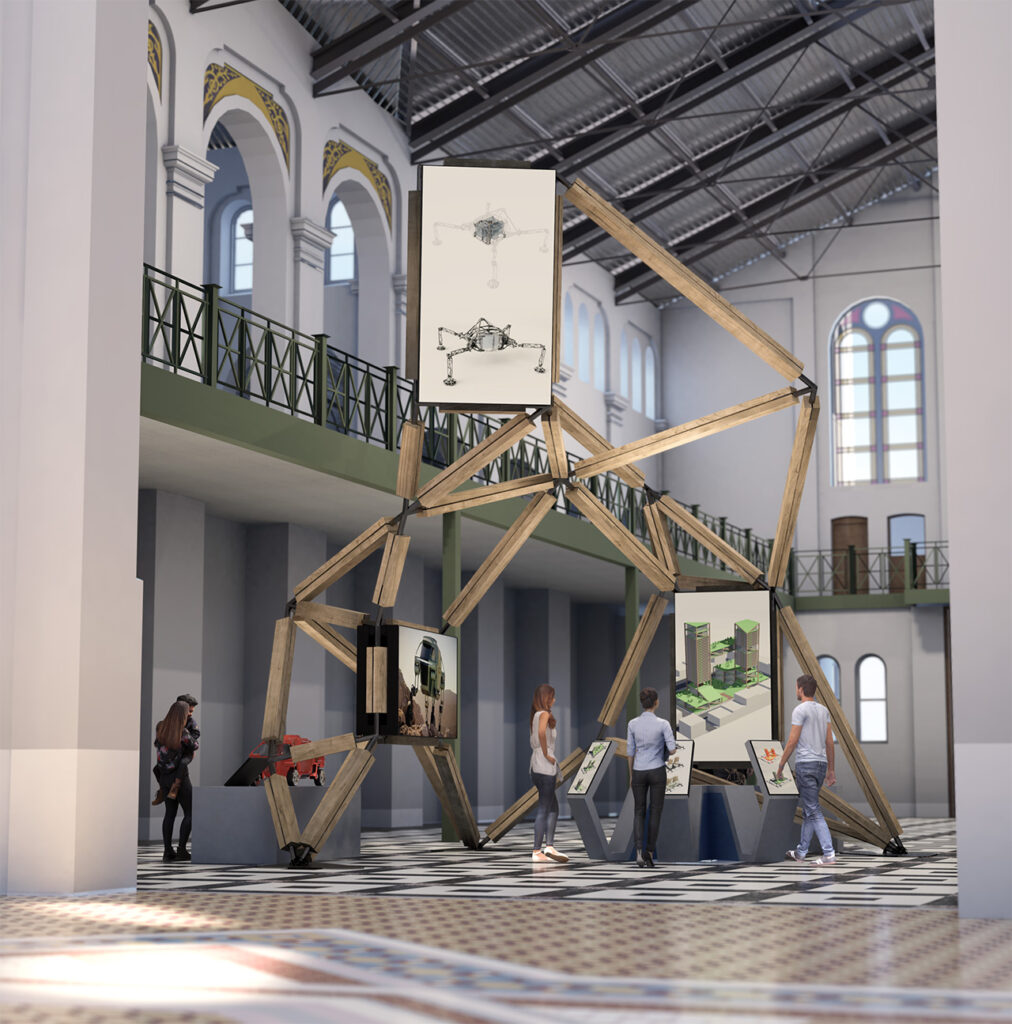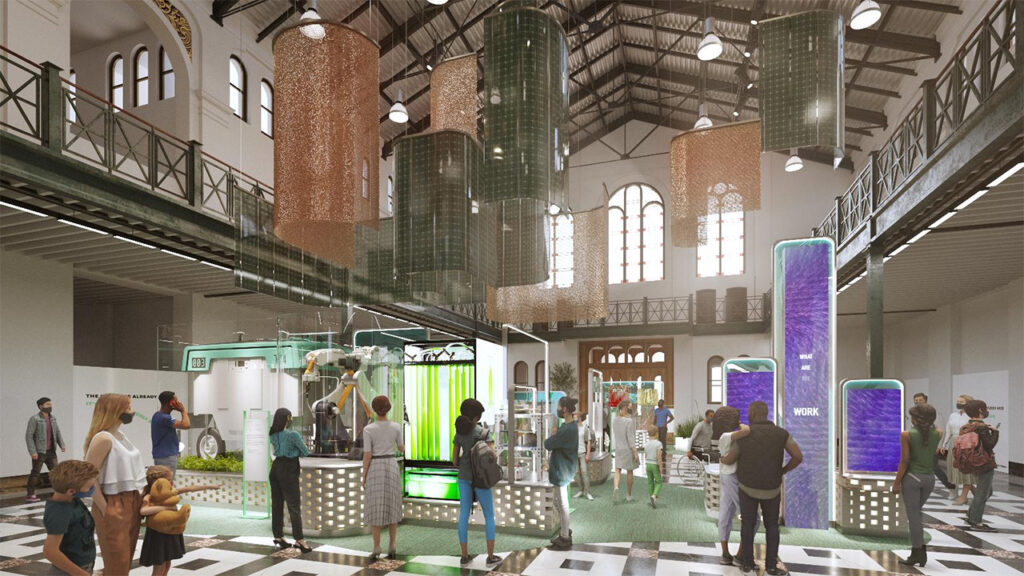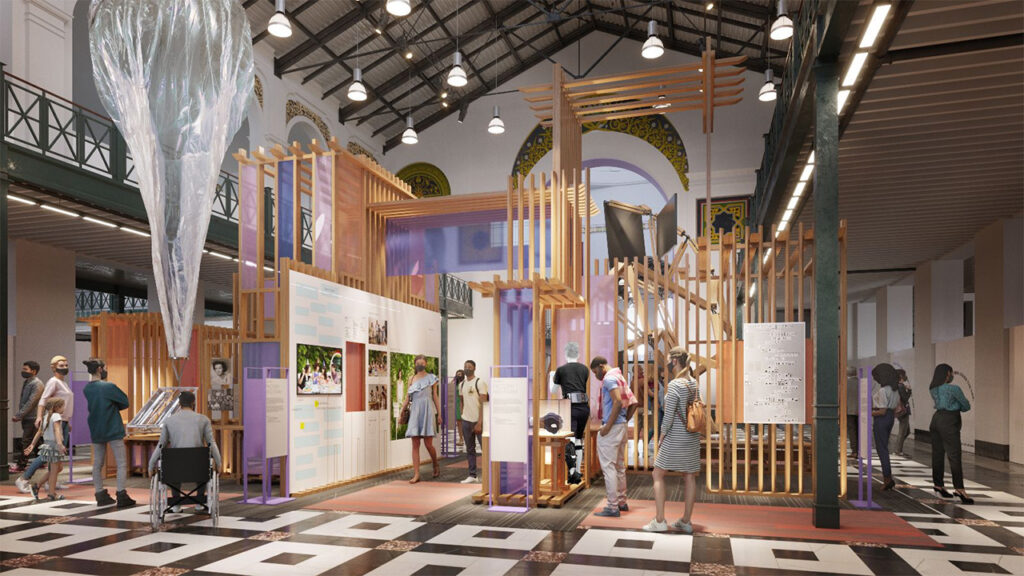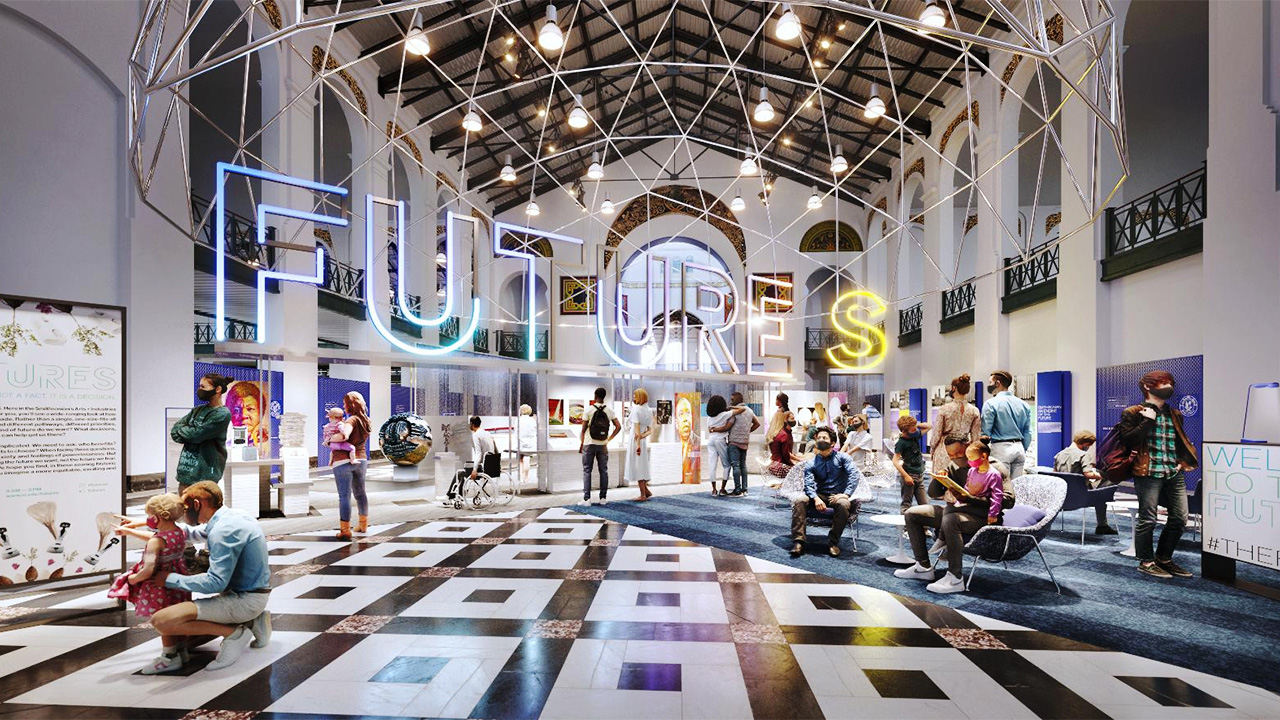For the Smithsonian’s 175th anniversary, the institution will be reopening its storied Arts and Industries Building for the first time in two decades to present FUTURES, an exhibition that imagines the future of our urban landscape. The show, designed by the Rockwell Group, is set to run from November 2021 through July 2022.
Hosted in a 32,000 square feet space, FUTURES will feature immersive art installations, interactive pieces, historical objects, and the Co-Lab, a centerpiece exhibit housing an ambitious project powered by artificial intelligence (AI) that invites visitors to conceptualize future cities. Created in partnership with 3D design and engineering software company, Autodesk, the “Future Communities” digital interactive asks three players to collaborate on the design of a small city block. While the players work together, a generative AI operates in the background to provide personalized recommendations to improve the structure and sustainability of their designs.

The Co-Lab, the 22 foot-high structure at the center of FUTURES which houses the interactive “Future Communities,” is itself designed with assistance from a generative AI. Image: artist rendering courtesy of the Rockwell Group
“With a typical design process, it might take days to weeks to design, evaluate, and detail a single design option,” Brad MacDonald, the Smithsonian’s Director of Creative Media, tells Jing Culture and Commerce. “With generative design, after setting up the initial parameters and constraints, every design option that was created was able to be designed, evaluated, and detailed simultaneously within minutes to hours.” Worth noting: the Co-Lab structure itself was designed with help from a generative AI that prioritized visitor experience.
Talk of AI, MacDonald recognizes, has often centered on a “worst-case scenario” (Skynet, anyone?), but with FUTURES, the hope is to “express the potential upside of technology being developed to solve fundamentally human issues.” Additionally, Smithsonian’s partnership with Autodesk — hardly a first — taps the company’s capabilities to build interactive elements into the experience “to ensure people see themselves as participants and not passengers towards the future,” says Ray Wang, Autodesk’s Senior Research Scientist.
“We hope that visitors to the FUTURES exhibit will walk away with a clearer understanding of how they feel about some of these large topics and conversations we’re featuring in the exhibit,” MacDonald concurs. “Hopefully, they’ll see themselves as essential in the crafting of, not just their own futures, but our collective futures.”
MacDonald and Wang share more below about FUTURES, AI, and the future of AI in museums.
Why the decision to integrate AI into “Future Communities”?
Wang: AI is already an integral part of our everyday lives. It is vital that everyone is able to understand the different ways AI systems work, their biases, and how we can work together using AI help to tackle complex problems such as climate change. Museums will play a huge role in exposing and educating the public on these issues, but also in acting as a forum for generating new ideas, experiments and research.
How is AI central to exhibit?
Wang: One of the key goals of the exhibit is to make sure visitors come away really understanding how the AI works and how it is providing these recommendations. At any point in the design experience, the player can zoom out of the city block view and enter the Generative Design view. In the Generative Design view, you will be able to see your city block within the context of the thousands of AI-generated city blocks and learn more about this technology. Generative design allows designers to challenge rules-of-thumb, expand their creativity and discover novel, unique, yet high-performing design possibilities.


Artist renderings of the exhibition space, including sections such as “Futures That Work” (above) and “Futures That Unite” (below). Images: courtesy of the Rockwell Group
How do you see generative design working in the broader museum context?
MacDonald: In theory, generative design could be used by exhibition designers to layout floorpans and display structures, to export fabrication-ready files to developers and contractors. The unique needs of a building and exhibition content could be input as design constraints. Is the building historic and have unique construction requirements? Do display need temperature control?
There are, of course, applications of AI in museum exhibit design this is specific to generative design. For example: AI functioning as curators or curatorial assistants, AI with natural language interfaces as docents and guides, AI to monitor and adjust environmental conditions to preserve objects, AI to display realtime data about exhibition content or visitor behavior. There’s so much that can be done!
Are there any other AI projects the museum is currently contemplating?
MacDonald: Many, but not all, of the AI-related projects we researched made it into the FUTURES exhibit but we are always looking for interesting new programming and content to be activated after FUTURES opens. Some of these are AI-related. At the moment we don’t have plans for a follow-up exhibition but when that eventually takes shape I’m sure AI will be part of the discussion. We’re taking this one step at a time.
What do you hope visitors will gain from interacting with the Co-Lab and “Future Communities”?
MacDonald: For the Co-Lab experience, we hope visitors will see AI and generative design as a tool to solve complicated design challenges more efficiently and without losing sight of the human in the experience. The technology is evolving rapidly and the more active we are in shaping its use, the more likely it will be of use. Currently, tools like AI are in the hands of developers and engineers, but the day will come, very soon, where the technology is more accessible to a broader community.



